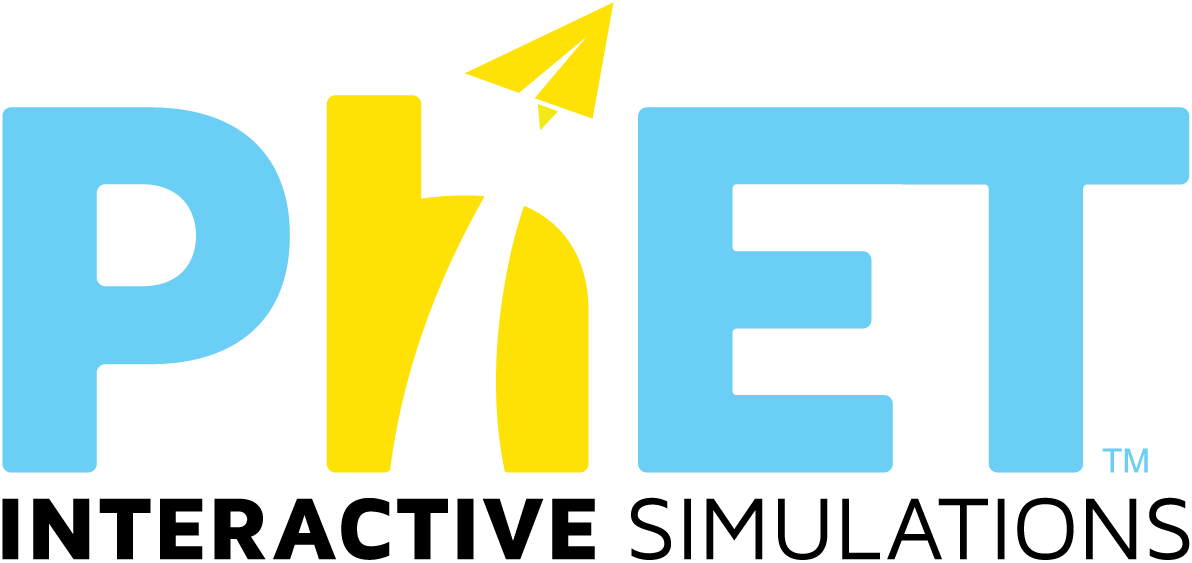117 kết quả tìm kiếm phù hợp với Work
Các Mô phỏng
- Bong bóng và Sự nổi
- Các lực trên 1 trục tọa độ
- Các trạng thái của vật chất
- Con lắc (HTML5)
- Con lắc lò xo (HTML5)
- Công viên ván trượt (HTML5)
- Công viên ván trượt: Phần cơ bản (HTML5)
- Định luật Faraday (HTML5)
- Định luật Hooke (HTML5)
- Game định thời bằng phương pháp phóng xạ
- Hiệu ứng Quang điện
- Lasers
- Lực và Chuyển động
- Lực và chuyển động: Phần cơ bản (HTML5)
- Máy phát điện (HTML5)
- Mặt phẳng nghiêng
- Mặt phẳng nghiêng: Lực và Chuyển động
- Năng lượng: các dạng và sự chuyển hoá (HTML5)
- Phòng thí nghiệm điện từ Faraday (HTML5)
- Phòng thí nghiêm điện từ của FARADAY
- Phóng xạ Alpha
- Quả cân và lò xo
- Sự phân hạch
- Thái Dương Hệ của tôi
- Tính chất của chất khí (HTML5)
Các công trình
- Modeling Friction (Inquiry Based)
- Conservation of Energy 1: Introduction (qualitative approach)
- Conservation of Energy using Masses and Springs (homework version) (Inquiry Based)
- Work - Energy
- FORCES AND MOTION WITH WORK ENERGY
- The Photoelectric Effect and Work Functions
- The Photoelectric Effect and Work Functions
- Work and Energy Simulation Lab
- Work Energy on a Ramp
- Elastic potential energy, work and Hooke’s law.
- Photoelectric Effect
- Ripple While You Work
- Application of The First Law of Thermodynamics
- Energy Skate Park
- Spring or Sprung?
- Conservation of Energy (Energy Skate Park)
- Potential Difference in Circuits
- Qualitative Introduction to Energy
- Energy Skate Park-NGSS aligned HS
- Ramp Activity 1: Using free body diagrams for motion on an incline (Inquiry Based)
- Ramp Activity 2: Calculating Net force on an incline (Inquiry Based)
- Using Ratios and Rates to Solve Problems
- Investigating Springs
- Photoelectric Effect Virtual Experiment
- Photoelectric effect
- Forces and Motion: Finding the Mass of a Car
- Fields - NGSS Aligned
- Capacitor_Lab_Basics _html_Remote_lab
- RGB Color
- DC circuits lab with real equipment and CCK
- Video: Self-paced learning on Energy Skate Park (GPE, KE and Work done)
- The Ramp Mechanical Advantage and Efficiency
- Bunny Blitz
- Exploring Light as a Particle
- projectile motion
- Equivalent Expression Exploration
- Energy Chains
- Greenhouse Gas Lab
- Exploring pH & Its Variations Through Water Dilution (for visually impaired students)
- Rotational Equilibrium Simulation HW
- Force and Motion
- Energy Skate Park Formal Lab
- Models of the Atom
- projectile motion
- Exploring parallel and perpendicular lines
- Ohm's Law Graphing Lab
- pH Relationships
- Defining Functions
- Electric Field Lab
- Photoelectric Virtual Experiment
- Forces and Motion Basics Interactive Activity
- Charges and Fields Exploration
- Forces and Motion - Friction and Free Body Diagrams
- Action Potential Simulation - Guided Inquiry Activity
- PhET Buoyancy Lab Student Worksheet - Exploring Density, Gravitational Forces and Buoyant Forces
- Refraction Lab
- Projectile Motion
- Variables and Coefficients
- Potential Energy of A Spring (Elastic Potential Energy)
- Balancing equation
- Thermodynamics of Skating
- Electric Field vs Electric Potential
- Energy Skate Park Lesson
- Radioactive Decay, Fission and Chain Reactions
- Maze Game
- Greenhouse effect activity
- projectile motion
- Energy Skate Park Lab (html5)
- High School Chemistry 1 level: Limiting reagents
- Spring Simulation - Identifying Variables & Asking Questions
- Free fall
- Lab - Natural Selection
- Mr. (Moving Man)
- Stimulating Neurons
- CD's, DVD's & Optical Commmunication: Binary Coding and Diffraction Errors
- Light Emission and Lasers
- Gas Laws, Quantitative, Gay-Lussac's law
- Gas Laws, Quantitative, Charles' law
- Unit Rate as Slope
- Gas Laws, Quantitative, Boyle–Mariotte law
- Virtual Lab - Circuit Basics
- Writing an Equation for the Wave
- Greased Lightning
- Hooke's Law, Spring Constant, and Energy HONORS
- The Two-Slit Experiment
- Playing with atoms
- Energy Simulation Lab - Skate Park
- Quest for the Coulomb Cup
- Atomic Models and Spectroscopy
- States of Matter - Lab Simulation - student procedures and questions
- Coulomb's Law Data Collection and Analysis (remote online learning)
- Computer Simulations as a Tool to Assist Teaching Basics of Electromagnetism (Simulações Computacionais Como Ferramenta Auxiliar ao Ensino de Conceitos Básicos de Eletromagnetismo)


